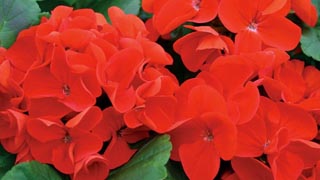Dermatology advice on best skin care for older people
The skin forms a natural protective barrier that as we age becomes less effective. It is more prone to become dry and is less robust when exposed to irritants such as soaps, shower gels and biological washing powders. However, by using a few simple skin care strategies it is possible to keep the skin healthy and to avoid many of the unpleasant symptoms that can accompany the ageing skin.
This article will focus on maintaining a healthy skin and will particularly look at ways of making sure that the skin’s barrier is as effective as possible.
What is healthy skin?
Healthy skin can be likened to a brick wall structure, the skin cells are the bricks which are held together by a complex mixture of fatty acids. When there are not enough of these fatty acids the structure of the “brick wall” becomes unstable. Water is lost from the skin surface leading to dry skin and irritants can penetrate through the skin more easily. There are two key ways of ensuring that the brick wall structure is kept strong.
Avoid irritants
Firstly, avoid substances which irritate the skin. These tend to break down the natural fatty acids and lead to itching and dryness; the skin may also become sore.
Detergents and soaps are two of the main irritant culprits. Normal perfumed soaps and bubble baths will cause skin dryness and are best avoided in the older person. Soap substitutes are now commonly available in chemists- broadly speaking these are formulated in such a way as to moisturise the skin rather than dry it.
Aqueous cream has been a commonly used soap substitute, however this has been shown to be irritating so other non-perfumed white creams are better options. Aqueous cream should not be used as a leave on emollient either.
Other substances that will irritate the skin include washing-up-liquid, cleaning products, laundry detergents and fabric conditioners. Protective gloves should always be worn when these substances are in use.
Always use a moisturiser
Secondly, apply a moisturiser to the skin. There are dozens of products on the market, it is important to find one that suits you.
Greasy ointments can be helpful for very dry skin but most people find them too sticky for every-day use. Creams are usually the best bet, as they have a good ability to moisturise and are more cosmetically acceptable.
Lotions are generally more watery and therefore whilst easily absorbed are a bit less effective. The key guideline is to find an unperfumed product and these tend to be the pharmaceutical grade emollients. Mostly these are only available in pharmacies.
Pump dispensers are cleaner and easier to use and most products are now available in this format. It is important that moisturisers are used regularly and always after a bath or shower. Other applications need to fit into daily activities, but applications should be made whenever the skin becomes dry (this may be two or three times a day).
When applying the moisturiser to the skin do so by gently stroking rather than vigorous rubbing! The moisturiser will sink into the skin of its own accord given a few minutes.
Itchy skin
Itchy skin is a common complaint for older people. Whilst itchy skin may be a symptom of a more serious underlying condition- more often than not, itching is the result of dryness so avoiding irritants and using moisturisers is enough to keep itchy skin at bay.
Itchy skin is always worse when an individual is not occupied or distracted. Feeling anxious seems to heighten itching so a vicious cycle occurs as itching causes anxiety and this worsens the itch. Keeping busy and having something else to focus on is another strategy, along with moisturisers, of lessening the impact of itchy skin. If the simple measures highlighted above are not helping a visit to the GP is advised so that other causes of itching can be identified.
With some care elderly skin can remain healthy. By avoiding irritants and using moisturisers the skin barrier will be more effective making dry, itchy skin significantly less likely.
Possible emollients and their uses
|
Looking after cracks and crevices
And finally…looking after skin in cracks and crevices is particularly important. Between toes and under skin folds are vulnerable to fungal infections, the moist, warm, dark environment make them ideal places for fungus to take hold. Careful cleansing and drying of these areas is vital.
Whilst a fungal infection is more of a nuisance than anything, the fact that they cause breaks in the skin mean that other, more dangerous infections can take hold. Drying in these hard to reach areas can be difficult- using a cool hair dryer might be helpful or using gauze rather than a fat towel can ensure that small gaps (especially between toes) are easier to get to.









